Understanding Why Your Goldfish Died: 9 Potential Reasons
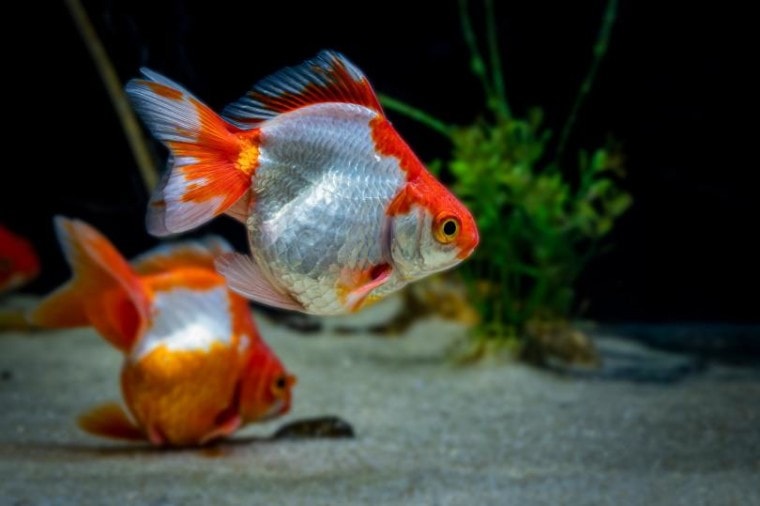
Everyone who has unexpectedly lost a pet goldfish is left wondering why their goldfish died and what they could’ve done to prevent it. Honestly, you may never know why your goldfish died suddenly, but there are a lot of reasons a seemingly healthy goldfish may die. Those reasons can all be grouped into three categories: injury, illness, and environment. To help you better understand why your goldfish may have died, we’re going to dive into some of the most common causes in each category and what you can do to fix them in the future.

Why Did My Goldfish Die? 9 Possible Reasons
1. Being Attacked

If this is the case, it’s likely that your fish will have some visible signs, like torn fins or bleeding. Oftentimes, bullying and aggression happen routinely before it leads to the death of a fish, but it is possible for an event to occur that triggers an attack. Your goldfish aren’t just at risk from other goldfish either. Competition over resources or territories, or generalized aggression from inappropriate tank mates can both lead to an attack that leaves a fish dead. To prevent this, make sure you separate any aggressive tank inhabitants from the rest of the tank. Also, ensure your goldfish are only housed with appropriate tank mates.
2. Breeding Behaviors
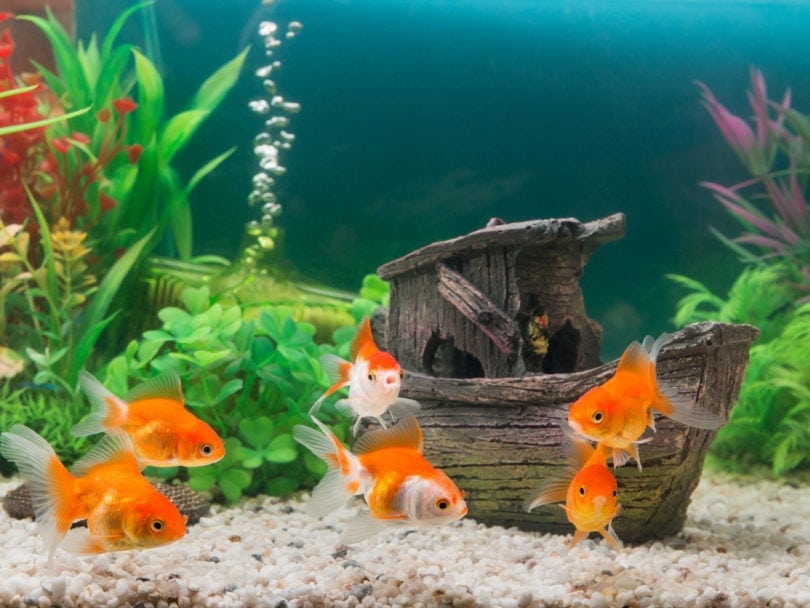
If you’ve seen goldfish breeding behavior before, you know it can be very physical and stressful to the fish, especially the female. Male goldfish will chase a female relentlessly until she releases her eggs. This can go on for days or even weeks and can lead to injuries like scale loss and fin injuries. Once again, this is a situation where you’re likely to see symptoms, but it’s not guaranteed. Sometimes, the stress of the behavior can kill a fish, and if the stress doesn’t kill your fish, it can lower their immune system, allowing dangerous infections to get a foothold. If you notice your males chasing your female to stress or exhaustion, you can separate them to different tanks until everyone cools off. You can also use breeding boxes and tank dividers to keep your female safe.
3. Internal Parasites
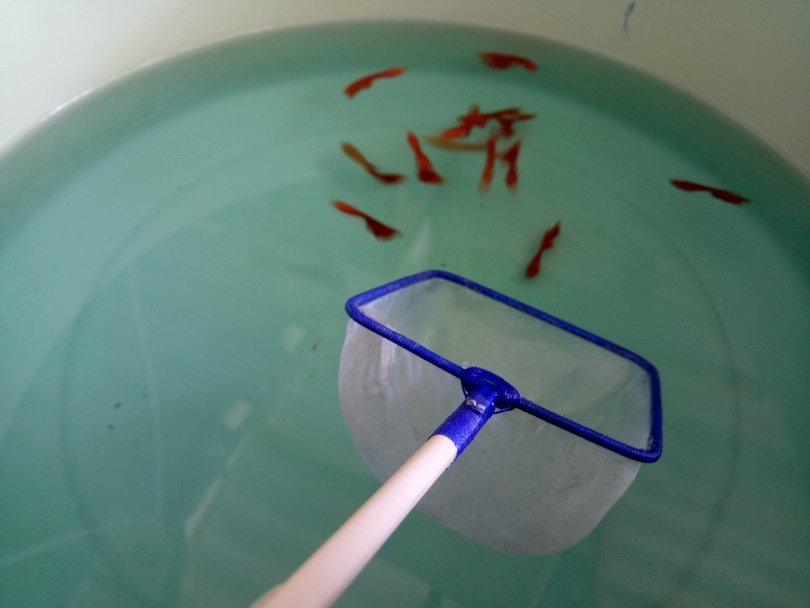
With external parasites, like ich and flukes, you can often see them with the naked eye. However, internal parasites are much harder to spot and sometimes don’t even cause symptoms until your goldfish is extremely ill. Parasites weaken the immune system, allowing for other infections. They also take energy away from necessary body functions and some parasites may even damage internal organs. Sometimes, the symptoms of internal parasites are subtle and nondescript, like fin clamping and lethargy, which makes it difficult to identify and treat for them. Prevention of parasites is your best weapon against them, and the easiest way to do this is to quarantine new fish and prophylactically treat them before they’re moved to the main tank with your other fish. There are multiple over the counter antiparasitic medications and treatments that can be used prophylactically or to treat an active infection.
4. Dropsy

Contrary to popular belief, dropsy is a symptom, not a disease on its own. Dropsy is caused by internal illnesses that lead to body fluid collecting in the fish’s abdomen. This leads to the characteristic “pinecone” look that fish with dropsy have as their belly swells and scales turn outward. Fish exhibiting symptoms of dropsy are already gravely ill and once dropsy has set in, the mortality rate is exceedingly high. In some fish, the abdominal swelling and pinecone appearance may be subtle, making it easy to miss. Dropsy is often treated with broad-spectrum antibiotics or antibacterial agents. This allows for the best chance of treating the underlying illness without knowing what organism is causing it.
5. Ammonia Poisoning
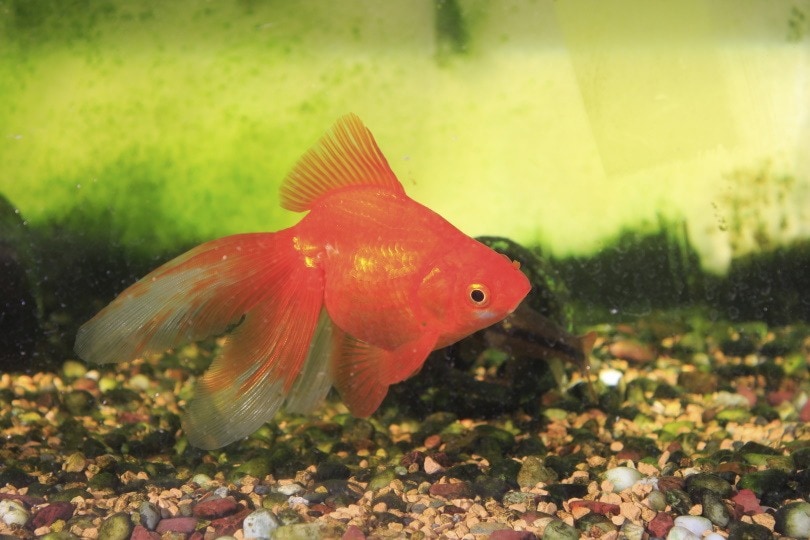
Ammonia is a waste product that comes from waste excreted by your goldfish, as well as decaying organic matter, including plants and animals. Ammonia is usually removed from your tank by beneficial bacteria, which consume the ammonia. There are two major causes of ammonia buildup in tanks, and those are poor filtration and lack of beneficial bacteria. Goldfish create a heavy bioload in an aquarium, so you need to ensure your filtration is strong enough to handle all of their waste, especially if your tank is overstocked.
A grave error many people make when setting up a new tank is not performing a tank cycle, which colonizes the beneficial bacteria. Without these bacteria, ammonia begins to buildup in the tank rapidly. It’s also possible to crash the cycle of an already established tank. This commonly happens with inappropriate filter media cleaning or changing or allowing your filter media to dry out. Beneficial bacteria live on surfaces that have a water current. This means that they live in the filter media, filter, substrate, and tank décor, but they don’t live in the water of the tank.
Ammonia poisoning is identifiable by black splotches appearing on your goldfish, which is an indicator that its body is attempting to heal from ammonia exposure. Ammonia poisoning can also lead to burns, scale loss, and fin rot. If something causes a rapid rise in ammonia levels in your tank, this can lead to death with few symptoms. Make sure you are routinely checking your water parameters to ensure your tank is cycled and waste products aren’t building up.
Related Read: Do Goldfish Need a Filter? Fact vs Fiction
6. Nitrite Poisoning
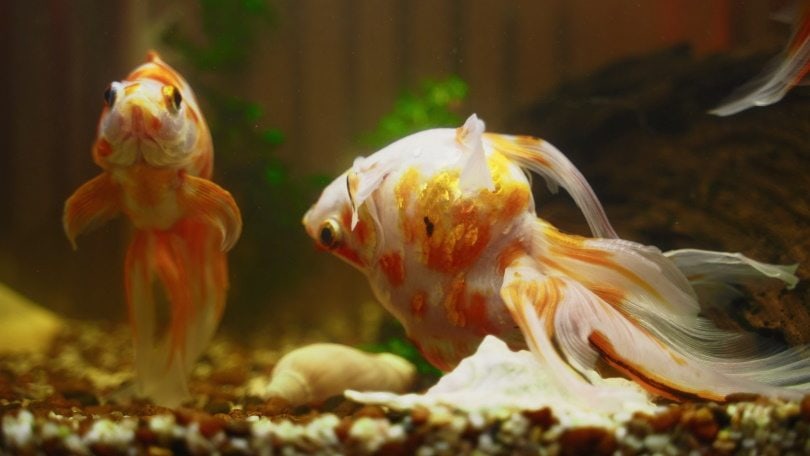
Nitrites are another part of the nitrogen cycle that occurs when you cycle your tank. This waste product can build up in similar ways to ammonia if your beneficial bacteria colonies aren’t functioning at max capacity. Nitrite poisoning symptoms include lethargy, listlessness, air gulping, brown coloration around the gills, and rapid gill movement. The biggest issue with nitrite poisoning, though, is that sometimes, there are no symptoms at all. Sometimes, your fish may just suddenly die from elevated nitrites. It won’t necessarily kill your whole tank all at once, either so if you’ve just lost one or two fish, this is a potential cause. Check your water parameters routinely to ensure your nitrite levels are staying under control. In a fully cycled aquarium, you should have no ammonia or nitrites.
7. Rapid Changes in Water Parameters
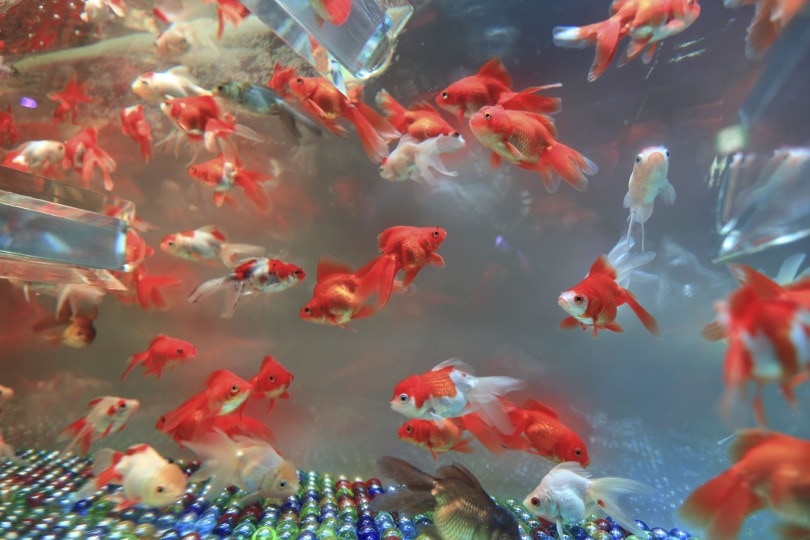
Sudden spikes in ammonia and nitrite levels aren’t the only water parameters that can lead to the demise of your fish. Rapid swings in pH levels can be caused by new tank water, the addition of pH altering minerals, and an accidental addition of an acidic or alkaline substance to your tank, like if you use a bucket to add new water to your tank that was also used with cleaning chemicals.
Chlorine and chloramine are additives in tap water that can kill goldfish as well. These get into your tank if you perform water changes and add untreated tap water to your tank. You should always use chemical additives that remove chlorine and chloramine from water before you add it into your tank. Chlorine and chloramine may even be present in well water and some bottled water.
8. Temperature Extremes
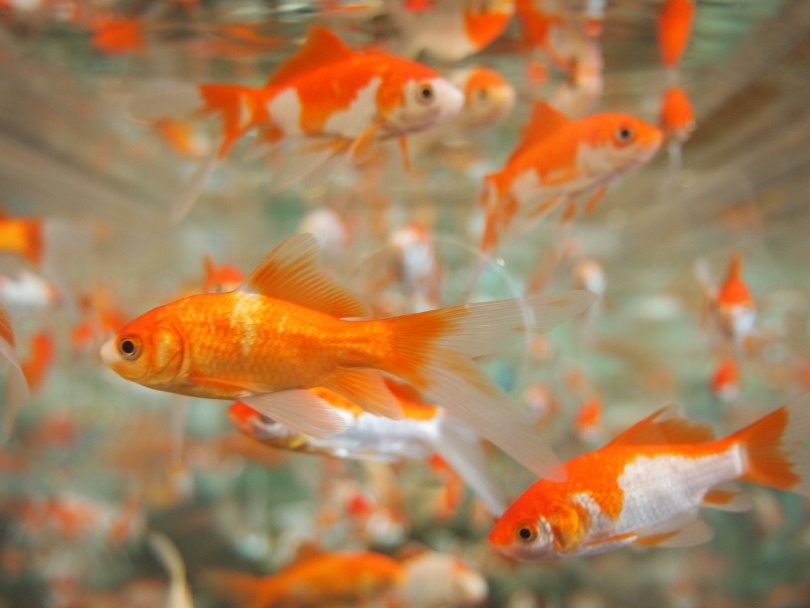
Rapid changes in your aquarium’s temperature can kill your fish, as well. This is most commonly seen when a heater malfunctions and “cooks” the tank, overheating it to a point that kills the fish. It’s not a guarantee that it will kill all fish in the tank, so the loss of only some fish should still be investigated. If your tank is kept somewhere that isn’t climate-controlled, like a garage or shed, or if your electricity goes out in inclement weather, your tank may experience rapid temperature swings. You can use an aquarium thermometer to determine the temperature of your tank water to make sure it’s staying in a safe range.
9. Electrocution

When you consider the number of electronics in and around an aquarium, this one probably doesn’t come as much of a surprise. Aquarium electronics are intended for use around water but it’s not unheard of for them to malfunction or wear out and send electricity into the tank. This most commonly occurs with a malfunctioning heater, but anything that touches your tank water that has an electrical current is at some level of risk for electrocuting your tank. If you think there is any possibility that this has occurred, do not touch your tank water to find out.
It goes without saying that electrical currents can be dangerous and sticking your hand into electrocuted water will harm you. If you think there’s any chance your tank was electrocuted, shut off all electrical currents, preferably at the fuse box, and then wait a short while before attempting to touch the tank or tank water.

In Conclusion
If you’ve experienced the sudden loss of a goldfish, it can be sad and frustrating. Finding out what happened can be difficult, especially if there are other animals in the tank that appear fine. Keep in mind that your goldfish could have an underlying condition you’ve never seen symptoms of and, eventually, goldfish do die of age-related complications. If your 10-year-old goldfish dies suddenly, it may just be related to age, but it’s good practice to check your water parameters to ensure your water quality is high and your tank is still cycled.
Looking to adopt a new goldfish? Check out these adorable breeds:
Featured Image Credit: Sad Agus, Shutterstock



Không có nhận xét nào